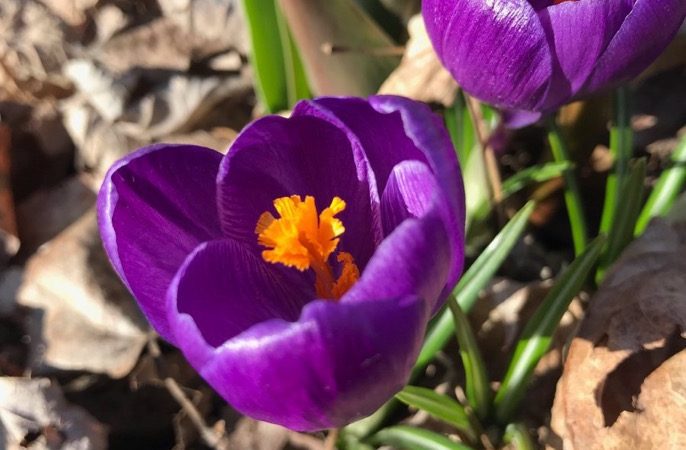Tips to Wake Up Landscape Beds for Spring

Soon enough our landscapes will be waking up for spring. Flower bulbs and some early perennials will start to show off their early spring colors and get everyone excited about warmer temperatures and longer days. How can you make the best of your customer’s spring landscapes?
Spring Wake Up!
Once the snow melts away, landscape beds will really stick out against the gray/black asphalt, concrete, or surrounding turfgrass. Depending on the mulching depths from the previous year and the type of mulch used, spring bulbs and perennials may start popping up in a few weeks. Most bulbs can push through frozen mulch with little to no issue and very little consequence against the cold night temps. Landscape plants such as Lenten Rose (Helleborus), some fern species, ornamental grasses, astilbe, lavender, and creeping phlox may still be green in beds and the Lenten Rose will typically flower from February to May. These perennials can be trimmed up and kept fresh looking by removing brown foliage but leave the green foliage for spring blooms! If sunny days warm the soils enough, some herbaceous perennials such as daylilies and hostas will begin to emerge. Burlap or heavy linens can be pinned down as needed to cover the tender plant material if nights are below 32 degrees.
Landscape Bed Pre-emergent
Selecting the right landscape bed pre-emergent can be a challenge depending on if or what specific plants your customer would like planted later this spring or summer. Only apply granular pre-emergent when plant leaves are dry or still below the soil/mulch level and avoid letting granules fall into plant whorls (ex: hostas new emergence, tulips). Also, avoid plant foliage when spraying most liquid pre-emergents. Always read the label thoroughly to make sure plant material is safe for application of specific active ingredients and any other restrictions.
| Active Ingredient | Brand Name | Total sq. ft. Covered | Liquid/ Granular | How Long Does It Last? | Notes |
|---|---|---|---|---|---|
| Flumioxazin 0.25% | Broadstar | 50 lb. bag = 14,500 sq. ft. | Gray Granular | Up to 6 Months | Do not apply where annuals will be planted. |
| Pendimethalin 1% and Dimethen-amid 0.75% | Freehand 1.75G | 50 lb. bag = 14,500 sq. ft. | Brown/Yellow Granular | Up to 6 Months | Kyllinga and Sedge Mgmt |
| Trifluralin 2% and Isoxaben 0.5% | Snapshot 2.5 TG | 50 lb. bag = 14,500 sq. ft. | Yellow Granular | Up to 4 Months | |
| Dithiopyr 0.25% | Dimension DG | 50 lb. bag = 11,000 sq. ft. | Brown Granular | Up to 4 Months | Pre and some post emergent control. |
| Trifluralin 5% | Trammel 5% | 40 lb. bag = 22,000 sq. ft. | Brown Granular | Up to 3 Months | |
| Flumioxazin 44% | Sureguard SC | 64 fl. oz. = 5.3 acres (12oz./A) | Liquid | Up to 9 Months | |
| Dithiopyr 24% | Dimension 2EW | 64 fl. oz. = 2 acres (2 pts/A) | Liquid | 3-4 Months | Pre and some post emergent control. |
Fertility
For woody ornamental trees and shrubs, granular fertilizer or even deep root feeding can still be done while plants are dormant- even if they were missed or delayed in the fall. Woodace Acid 12-3-6 or Healthy Grow 2-4-3 and 10-3-2 are easy to apply, and because of the sulfur and biosolids found in all of them, they will help to condition the soil. Landscape beds with suspected salt damage can be treated now too with granular gypsum and Foliar-Pak BioDrive or Promote.
Insect and Disease Scouting
While the leaves are still off the trees and there is no snow to plow, this is a great time to get out and look over woody ornamentals in the landscapes. Check for any insect scale and dead or diseased branches that can be pruned now. This will save time during the growing season when everyone is too busy to notice these little guys and eyesores. Make note of locations with insect scale present so that spring treatments can be done more efficiently and plants can be watched more closely as the season progresses.
Follow these tips for great results this spring!
Bridget Bergey
Facility Manager and Plant Pathologist M.S.







